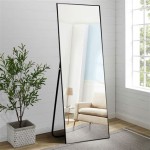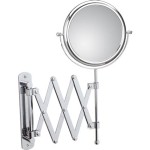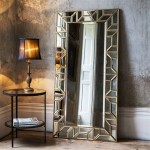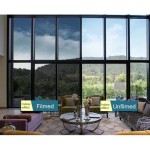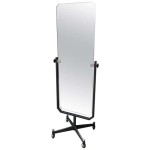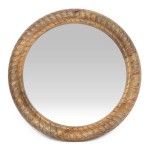Do Convex Mirrors Make Things Look Bigger or Smaller?
Convex mirrors, characterized by their outward curvature, are frequently encountered in everyday life, from security mirrors in stores to side-view mirrors in vehicles. Understanding how these mirrors affect the perceived size of objects is crucial for their effective utilization.
Diminished Images: The Primary Effect of Convex Mirrors
Convex mirrors always produce images that are smaller than the actual object. This reduction in size is a direct consequence of the diverging nature of light reflected from the curved surface. Light rays emanating from a single point on the object diverge after reflection, creating a virtual image behind the mirror. This virtual image is always upright and smaller than the original object, regardless of the object's distance from the mirror.
Wider Field of View: A Key Advantage
While convex mirrors shrink the size of reflected images, they offer a significant advantage: an expanded field of view. The diverging reflection pattern allows the mirror to capture light from a wider angle compared to a flat or concave mirror. This wider perspective is why convex mirrors are often employed in situations requiring a broad visual range, such as surveillance or driving.
Virtual Images: Understanding the Nature of Reflection
The images formed by convex mirrors are always virtual. This means that the light rays do not actually converge to form the image. Instead, the image appears to be located behind the mirror's surface, at the point where the reflected rays appear to originate from when traced back. Because these rays don't physically intersect, the image cannot be projected onto a screen, unlike real images formed by concave mirrors under specific conditions.
Distance and Image Size: A Consistent Relationship
As an object moves closer to a convex mirror, its reflected image increases in size. However, the image always remains smaller than the object itself. Conversely, as the object moves farther away, the image diminishes in size, appearing closer to the focal point of the mirror. This focal point is a theoretical point behind the mirror where reflected rays from parallel incident light would converge if extended backward.
Applications in Security and Surveillance
The ability of convex mirrors to provide a wide field of view makes them invaluable for security and surveillance applications. In stores, convex mirrors strategically placed in corners or above aisles allow personnel to monitor a large area with a single glance. Similarly, security mirrors in parking garages or blind corners enhance visibility and improve safety.
Automotive Applications: Enhancing Driver Awareness
Convex mirrors are commonly used as passenger-side wing mirrors in vehicles. The "objects in mirror are closer than they appear" warning printed on these mirrors acknowledges the size reduction effect. While the smaller image might initially seem like a disadvantage, it allows drivers to see a wider area of the road beside and slightly behind them, mitigating blind spots and increasing overall road awareness. This wider field of view outweighs the diminished image size in terms of safety and practicality.
Optical Principles at Play: Understanding Divergence
The image formation in convex mirrors is governed by the laws of reflection and the geometry of the curved surface. The outward curvature causes incident light rays to diverge upon reflection. This divergence is the fundamental reason for the diminished image size and wider field of view. The angle of incidence, the angle at which light strikes the mirror's surface, and the angle of reflection, the angle at which light bounces off, are always equal, adhering to the fundamental law of reflection.
Comparing Convex Mirrors to Other Mirror Types
Convex mirrors differ significantly from concave and plane mirrors in their imaging properties. Plane mirrors produce virtual images of the same size and orientation as the object. Concave mirrors, on the other hand, can produce both real and virtual images, with the image size and orientation depending on the object's distance from the mirror. Unlike convex mirrors that always create smaller, virtual images, concave mirrors offer a more complex range of image characteristics.
Convex mirrors, with their unique ability to shrink images while expanding the field of vision, serve important roles in enhancing safety and awareness in various applications. Understanding the principles behind their image formation allows for their effective utilization in a broad range of contexts.
How Do Reflections From Convex Mirrors Make Objects Appear Smaller Quora
Objects In The Mirror Are Actually Images Article Khan Academy

Convex Mirrors And Objects Larger Than The Mirror

Convex Mirrors And Objects Larger Than The Mirror
Objects In The Mirror Are Actually Images Article Khan Academy
Why Does The Car Side Mirror Display Objects Appear Further Than They Are Not Just Make As Quora

Does A Convex Mirror Make Things Bigger House Caravan

Does A Convex Mirror Make Things Bigger House Caravan
Objects In The Mirror Are Actually Images Article Khan Academy
Objects In The Mirror Are Actually Images Article Khan Academy

